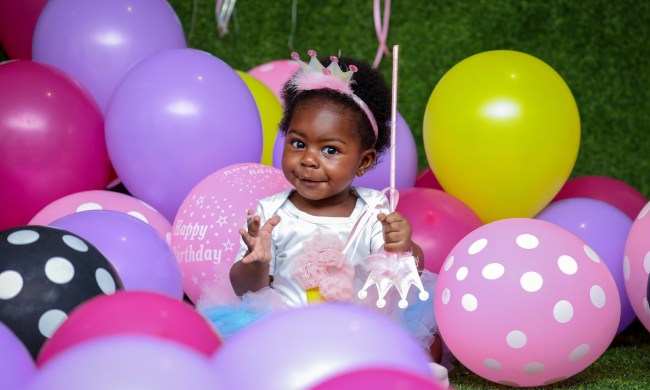We love being outdoors with our little ones. Of course, fresh air, sunshine, and a change of scenery can make everything better. Unfortunately, one drawback that comes with the alfresco territory, especially during the summer months, is bugs. Creepy, crawly, bitey, and stingy bugs to be more specific. It’s one thing when adults or even teens get an itchy, painful sting, but when your poor, defenseless baby gets one? Well, it’s hard not to cry along with little ones when they’ve been bitten or stung by a bug. As parents, we know it’s uncomfortable, painful, and scary for babies and toddlers. It’s important to be prepared for bug bites and to know what to do. Then, read on for our tips on how to identify, treat, and, hopefully, prevent mosquito bites on babies, as well as other insect bites.
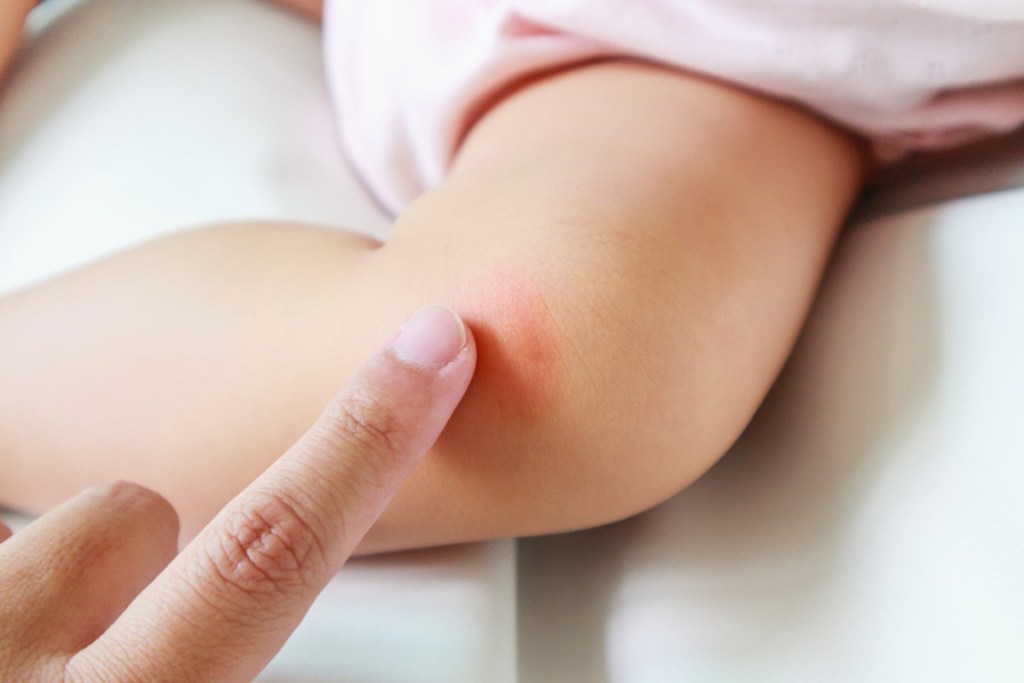
How to identify different bug bites
Before you panic and call the pediatrician, you can try to identify a bug bite or sting yourself. Most of the time, a bug bite results in a red bump on your child’s skin. You may notice your child grabbing at it or scratching the skin before you even see the spot. Here are the most common insect bites on babies and kids:
- Mosquito: ‘Tis the season. Mosquitoes do not discriminate — blood is blood, and they will feast on your baby’s soft, delicate skin without hesitation. A mosquito bite on baby looks the same as a mosquito bite on an adult. It can be characterized as a small red bump with a tiny dot in the center.
- Bee sting: If you see a red dot with almost instantaneous swelling, you know your child was the victim of a bee or wasp. A stringer may also still be embedded in the skin. Of course, before you even identify the mark, your child might be crying in pain. While not very common, bee and wasp stings can cause serious allergic reactions in some children, so it is vital to watch your kiddo carefully following the sting.
- Fire ants: Fire ant bites can be painful and cause a burning sensation. They typically happen on the feet or legs, and can result in swelling and fluid retention.
- Flea bites: These often appear in a small group of red dots. Flea bites can be more common in babies and young children when there is a fur-baby in the house.
- Bed bugs: Appearing as a cluster, bed bug bites often have dark red spots at the center. These will usually be on an exposed part of the body that PJs don’t cover.
If you have any questions or concerns about your child’s bug bite, don’t hesitate to give your pediatrician a call.
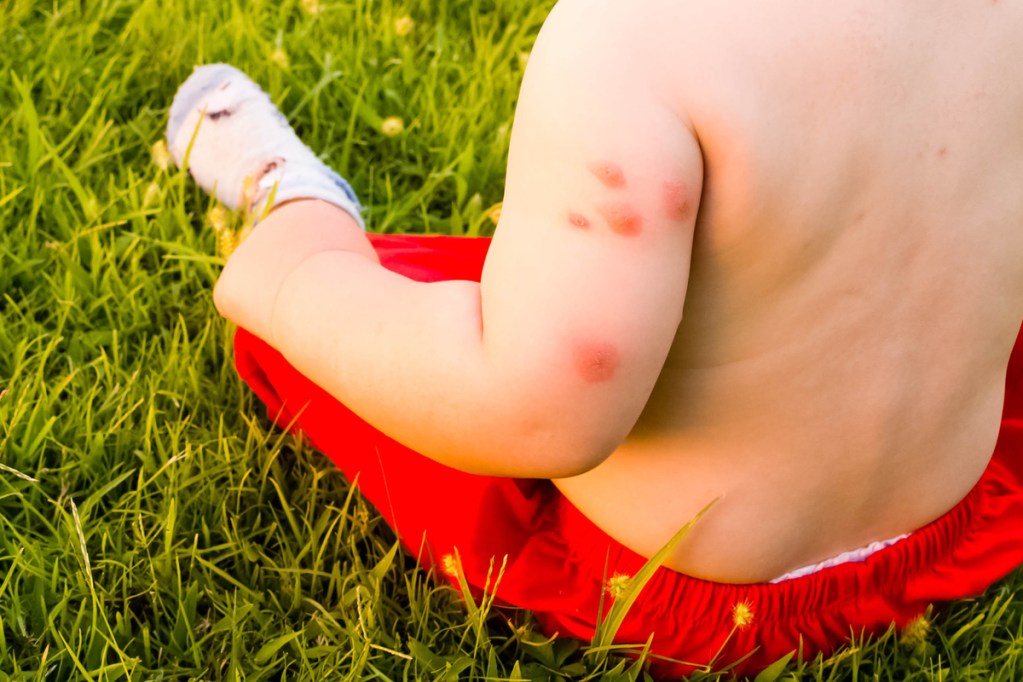
How to treat bug bites
These over-the-counter treatments will help out little ones if they’ve been the victim of a mosquito or an insect bite:
- Hydrocortisone or antibiotic cream: Before you whip out your handy hydrocortisone cream or slather on an antibiotic ointment, talk to your child’s pediatrician. Some hydrocortisone and antibiotic creams or ointments aren’t recommended for insect bites for babies under two years of age.
- Aloe vera gel: This calming gel can be applied directly to a bite to soothe the affected area and ease the itching. Keep aloe vera in the fridge, so it’s extra cooling. Aloe vera gel is helpful to have around the house. It’s great for sunburn too.
- Baking soda paste: Stir a few drops of water into a teaspoon or two of baking soda to create a paste that helps with itching.
- Treating a sting: If it’s a bee sting, you’ll want to first remove the stinger as quickly as possible. Clean the area with cool water, and consider using a cream as mentioned above or try some calamine lotion to soothe and relieve pain and itching. When using a cream, double-check with your pediatrician first. If you suspect your child is having an allergic reaction to an insect, seek immediate medical assistance. Time is of the essence.
- Tick bites: When your children spend time outdoors in the summer, you’ll want to check them for ticks. These buggers tend to gravitate to warm areas like the scalp, belly button, ears, elbows, knees, and private areas. If you see a tick, try not to panic. Step one is to remove the tick. You can try soaking a cotton ball in soapy warm water and holding it to the tick for 30 seconds or so. Remove, and, hopefully, the tick will come out, too. If this doesn’t work, you’ll need to use tweezers. Grasp the body of the tick near your child’s skin and pull straight out without turning your tweezers. Try not to squeeze the tick if possible. Don’t throw the tick away or flush it. Instead, put the tick in a jar. Then, show it to your pediatrician to determine if it is one that could carry disease. If you’re unable to save the tick for testing, you can discuss Lyme disease risk or other options with your pediatrician.
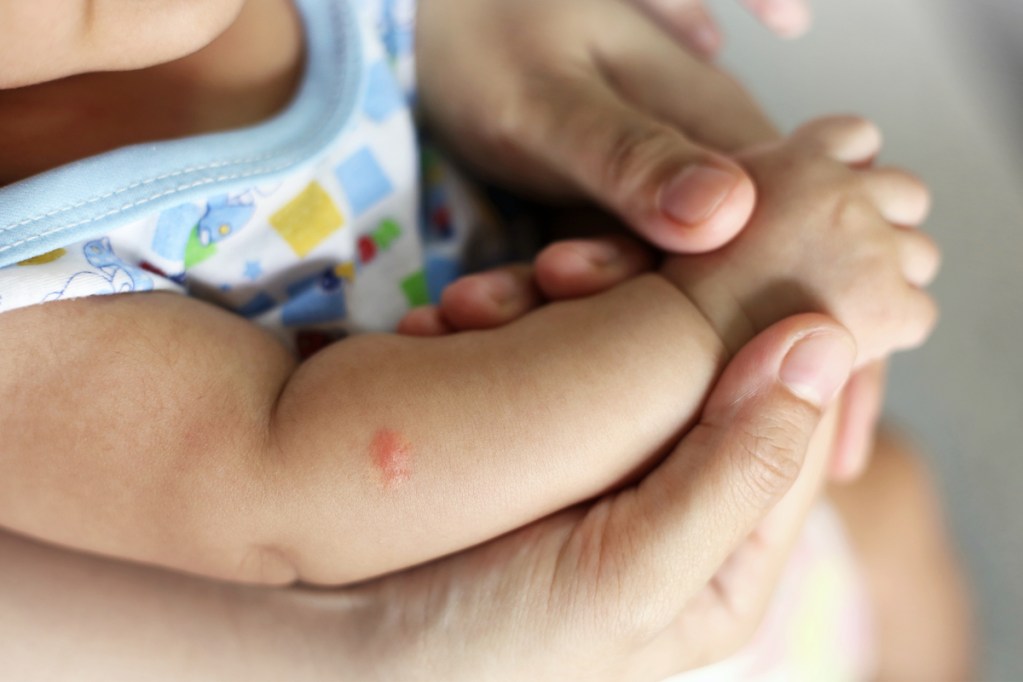
Signs that a bug bite might be more serious
Bug bites are typically more of an annoyance than a medical concern. Sometimes though kids can have reactions. Monitor the bite and make sure it’s healing properly. Call your doctor if the bite appears to crust over, get ultra-red, hard, inflamed around the center, or if the surrounding area becomes swollen. Moreover, if your child appears to be having an acute reaction to a bug bite, you’ll want to seek immediate help. If your child experiences shortness of breath, breaks out into hives, or becomes ill after a bug bite, call your pediatrician right away or take them to an ER or urgent care facility.
An allergic reaction will typically happen soon after a sting. Anaphylaxis is a rare, but a possible allergic reaction to a sting. This type of reaction requires immediate medical care. Don’t wait. Call 911.
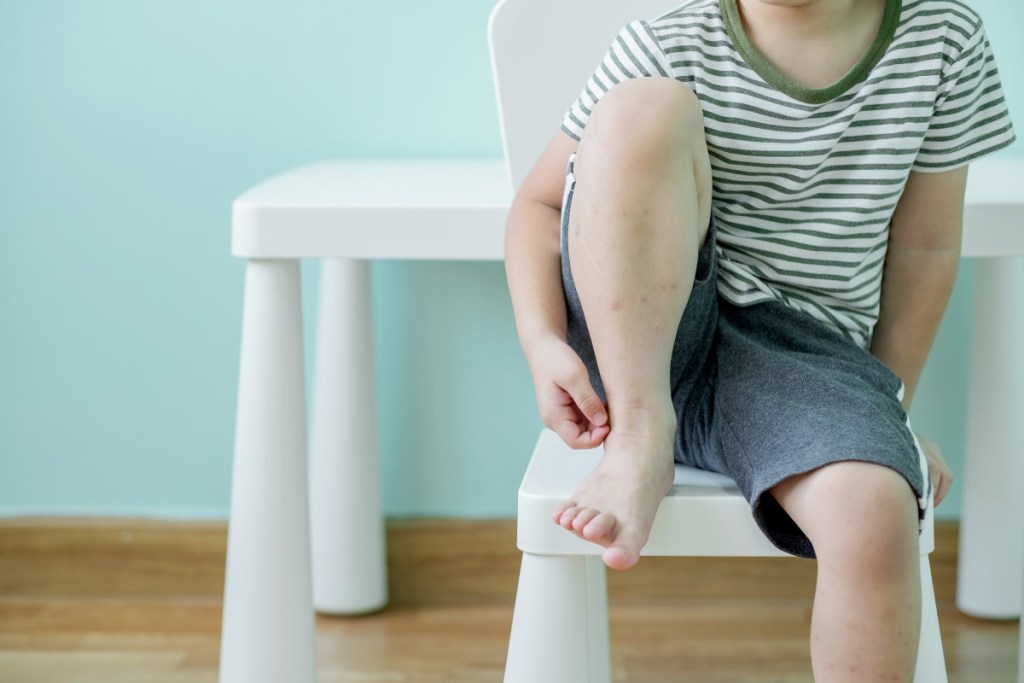
Prevention tips to avoid bug bites
Babies and kids need to be outside. Don’t stay in during the summer months to avoid the kiddos getting mosquito or other bug bites. Instead, take these preventative steps when it’s time to head out for a bit of fun:
- Dress for the occasion: If you know your child will be playing in a woodsy or heavily green area with long grass, dress them in long breathable pants, long sleeves, socks, and hats. Light layers are best, especially when it’s warm.
- Use bug repellent: You can use an insect repellent on infants older than two months of age. The American Academy of Pediatrics recommends using a 30% DEET product. Be sure to wash it off at night.
- Do a tick check: Always take a few minutes to give the kids a once over after a picnic, hike, an afternoon at the playground, or even just when playing in the grass.
- Consider having your property treated: If mosquito bites are problem in your own backyard, check into companies that spray your back and front yards during mosquito and tick season.
Bug bites aren’t any fun for anyone. It’s especially hard when your little ones take the brunt of a mosquito or fly swarm. There are some simple steps you can take to hopefully prevent mosquito and bug bites as well as a few to treat the inevitable ones that do happen. Either way, you’ll keep your kids calm and be prepared for when they do, and that will certainly take the sting out of an unpleasant situation.

